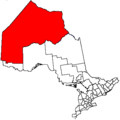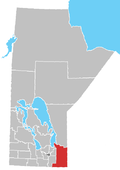References
- ↑ Kinew, Kathi Avery (1995). Manito Gitigaan : governing in the Great Spirit's garden : wild rice in Treaty #3 (PhD thesis). University of Manitoba. Retrieved 2024-01-25.
- ↑ "Registered Population, Animakee Wa Zhing #37". Crown–Indigenous Relations and Northern Affairs Canada . Government of Canada. 2015-01-23. Retrieved 17 February 2016.
- ↑ "Governance, Animakee Wa Zhing #37". Crown–Indigenous Relations and Northern Affairs Canada . Government of Canada. 2015-01-23. Retrieved 17 February 2016.
| Anishinabeg of Kabapikotawangag Resource Council | |
|---|---|
| Bimose Tribal Council | |
| Pwi-Di-Goo-Zing Ne-Yaa-Zhing Advisory Services | |
| Non-member Treaty 3 First Nations | |
The Numbered Treaties : Treaty Three | |
|---|---|
| Numbered Treaties | |
| Anishinabeg of Kabapikotawangag Resource Council | |
| Bimose Tribal Council | |
| Pwi-Di-Goo-Zing Ne-Yaa-Zhing Advisory Services | |
| Other Treaty 3 Nations | |
Division No. 1, Manitoba (Eastern Manitoba) | ||
|---|---|---|
| Towns | ||
| Local government districts | ||
| Rural municipalities | ||
| First Nations | ||
| Indian reserves |
| |
| Unorganized areas | ||
| Unincorporated communities | ||
| | This article about an Indian reserve in Ontario is a stub. You can help Wikipedia by expanding it. |

